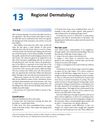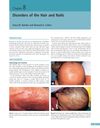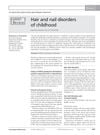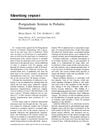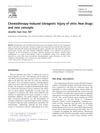Nail Disorders
January 2018
in “
Elsevier eBooks
”
acute paronychia chronic paronychia Candida albicans topical corticosteroids onychocryptosis ingrown toenails onychomycosis antifungal medications onycholysis onychauxis onychoschizia Beau lines trachyonychia nail clubbing habit tic deformity nail discoloration bacterial infection fungal infection thickened nails brittle nails transverse lines on nails rough nails
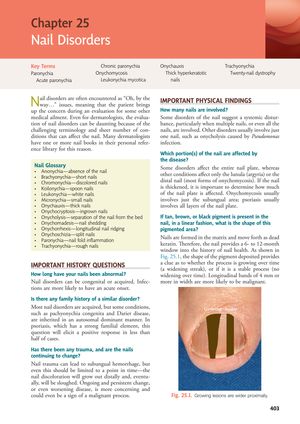
TLDR Different nail disorders are treated by targeting their specific causes and using appropriate medications or protective measures.
The document from January 1, 2018, provides an overview of various nail disorders, their causes, clinical features, and treatment options. Acute paronychia is a bacterial infection treated with incision and antibiotics, while chronic paronychia, often caused by Candida albicans, is managed with protective measures and topical corticosteroids. Onychocryptosis (ingrown toenails) and onychomycosis (fungal infection) are treated with mechanical interventions and antifungal medications, respectively. Onycholysis, the separation of the nail from the bed, requires treatment of the underlying cause. Other conditions like onychauxis (thickened nails), onychoschizia (brittle nails), Beau lines (transverse lines on nails), and trachyonychia (rough nails) are managed by addressing the primary disorder or underlying condition. Nail clubbing, often associated with systemic diseases, has no direct treatment, but underlying conditions should be managed. Habit tic deformity is treated with behavior modification and protective measures, while nail discoloration treatment focuses on identifying and avoiding the cause. The document also includes ICD-10 codes and notes that some treatments have limited study evidence. Images and references for further reading are provided.
